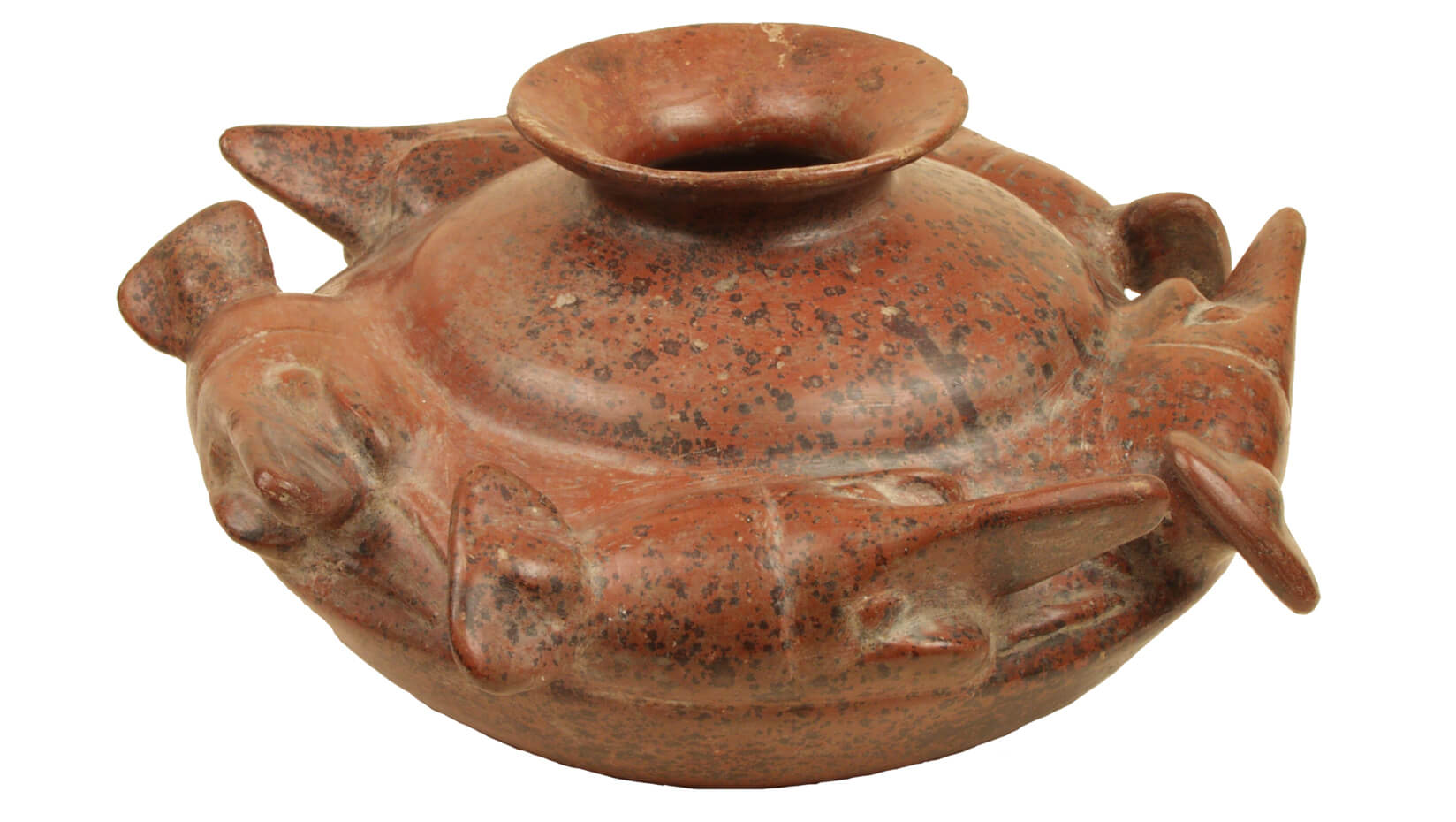
Hudson Museum contributes to ‘West Mexico’ exhibit in Oklahoma
An archaeology exhibition titled “West Mexico: Ritual and Identity” at the Gilcrease Museum in Tulsa, Oklahoma includes 21 objects from the University of Maine Hudson Museum.
The pieces on loan from UMaine and other public and private collections augment the more than 500 figures and vessels from West Mexico that Thomas Gilcrease amassed.
Robert Pickering, curator of “West Mexico: Ritual and Identity,” is familiar with the Hudson Museum’s West Mexican ceramics, having conducted research on its collections, says Gretchen Faulkner, Hudson Museum director.
The figures from the Hudson are part of the William P. Palmer III Collection. Faulkner adds that West Mexican ceramics are currently featured in the World Cultures Gallery of the Hudson Museum.
According to a release from the Gilcrease Museum about “West Mexico: Ritual and Identity,” about 1300 B.C.E., people began living in large towns and small farming hamlets in the western region of Mexico. Towns and villages were designed on a circular plan, which is different from cultures of the central Valley of Mexico, which built square platform pyramids and temples.
The circular pyramids were surrounded with a circular plaza, which was encircled by houses and temples on raised platforms. Long, narrow, stone-lined courts indicate inhabitants played a version of the Mesoamerican ballgame that was both sport and ritual.
 For centuries, people thrived on the region’s ecologically rich and diverse resources. But when Spanish soldiers, adventurers and priests came to the western lands, these cultures were already ancient and the sites had been abandoned, according to a Gilcrease Museum release.
For centuries, people thrived on the region’s ecologically rich and diverse resources. But when Spanish soldiers, adventurers and priests came to the western lands, these cultures were already ancient and the sites had been abandoned, according to a Gilcrease Museum release.
In the last 150 years, Mexican farmers have discovered the ruins also include large and deep shaft and tomb complexes. The dead sometimes were accompanied by finely made objects, including ceramic human figures adorned with brightly colored clothing, tattoos and body paint.
Archaeologists are seeking to learn more about what the figures indicate about the ancient societies. The exhibition also includes perspectives from contemporary art, art history, anthropology and various materials testing sciences.
As is the case with some archaeological research and exhibitions, ethical, legal and authenticity issues are involved and “West Mexico: Ritual and Identity” explores the issues.
Contact: Beth Staples, 207.581.3777
